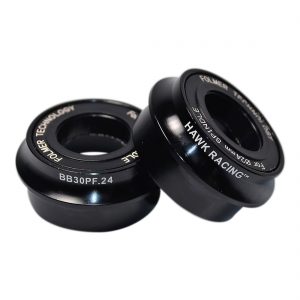If you race in triathlons or are about to, you know that one of the important parts of the race is your performance on the cycling ride. In fact, the right bike can make a significant difference in your performance, comfort, and overall experience during the race. Here’s a look at some advice that will help you choose the best bike.
Characteristics of a Good Triathlon Bike
Triathlon bikes are specifically designed for the unique demands of triathlons. They differ from road bikes in several important ways. Triathlon bikes feature aerodynamic frames, handlebars, and wheels to minimize drag and maximize speed. The geometry of these bikes is designed to place the rider in a more aerodynamic position, reducing wind resistance and improving efficiency. Additionally, the seating position on a triathlon bike helps conserve energy for the running portion of the race.
Think About What Kind of Bike You Need
Before diving into the technical aspects, consider your goals and needs. Are you aiming for long-distance Ironman races, or are you focused on shorter sprint triathlons? Your experience level, budget, and training intensity will also influence your choice. Understanding these factors will help narrow down your options and ensure you choose a bike that aligns with your objectives.
Frame Material
Triathlon bike frames are typically made from aluminum, carbon fiber, or a combination of both. Here’s a summary of the two types of frames you can use.
- Aluminum: Aluminum frames are generally more affordable and provide a good balance of weight and stiffness. They are durable and can be an excellent choice for beginners or those on a budget.
- Carbon Fiber: Carbon fiber frames are lighter and more aerodynamic. They offer better vibration dampening, which can lead to a more comfortable ride. While carbon fiber bikes are more expensive, their performance benefits make them a popular choice among serious triathletes.
Fit and Comfort
The right fit is important for both performance and comfort. A bike that fits well will allow you to maintain an aerodynamic position without causing unnecessary strain or discomfort. Many bike shops offer professional fitting services, where an expert will adjust the bike to suit your body measurements and riding style. Investing in a bike fitting session can make a substantial difference in your overall experience and performance.
Aerodynamics
Aerodynamics play a significant role in triathlon cycling. Look for bikes with aerodynamic frames, handlebars, and wheels. Aero handlebars, or aerobars, allow you to tuck in and reduce wind resistance. Deep-section wheels can also enhance aerodynamics, but they may be more affected by crosswinds. Balancing aerodynamics with stability is key to optimizing your performance.
Components
The quality of the components and drivetrain can affect the bike’s performance and durability. High-quality components, such as a bottom bracket by Hawk Racing, can make a difference in performance. Consider the gear range as well – a wider range can help you tackle various terrains more effectively.
Weight
While not as crucial as aerodynamics, the weight of the bike can still impact your performance, especially during climbs. Lighter bikes are generally faster and easier to handle. However, ultra-light bikes can be more expensive, so finding a balance between weight and cost is essential.
Budget
Triathlon bikes can range from a few hundred to several thousand dollars. Setting a budget beforehand can help you narrow down your options and avoid overspending. Remember to factor in additional costs for accessories, such as pedals, helmets, and bike shoes.
Test Ride
Whenever possible, test ride different bikes before deciding. A test ride will give you a feel for the bike’s handling, comfort, and overall performance. Pay attention to how the bike responds, especially in the aerodynamic position.
Choosing the best triathlon bike involves balancing various factors, including frame material, fit, aerodynamics, components, weight, and budget. By understanding your needs and goals, investing in a proper fit, and considering the technical aspects, you can find a bike that enhances your performance and enjoyment in these races.
Share this post:




